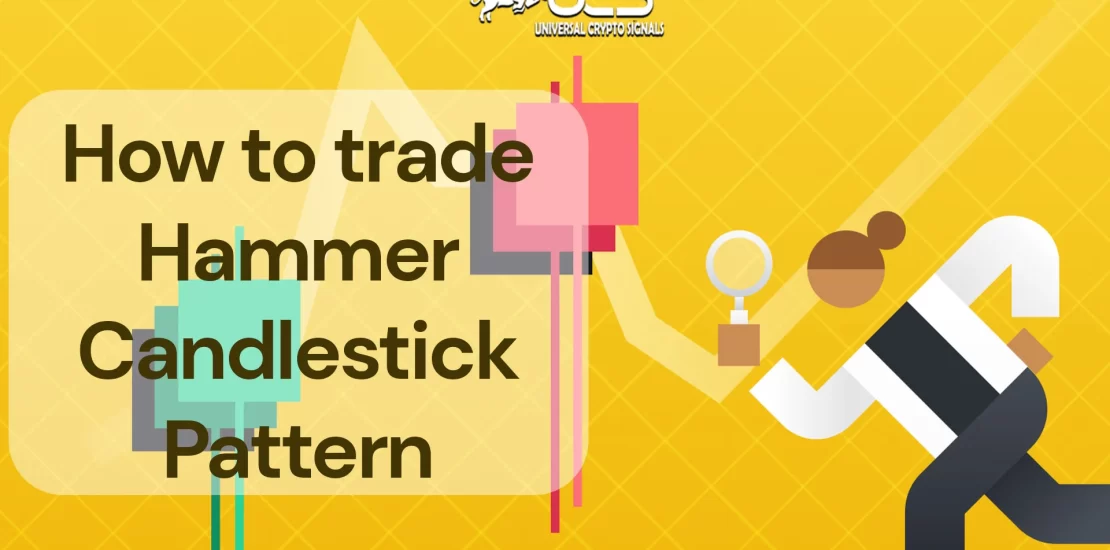- September 20, 2023
- Posted by: Jackson Bennett
- Category: News

In the world of finance, learning trading patterns can help you make more money. One popular pattern that traders really like is called the Hammer Candlestick Pattern. In this guide, we’ll look closely at this pattern, see how it looks, and learn how to use it for trading. When it comes to trading, one pattern that stands out is the Hammer.
It’s like a small but powerful tool that can make traders nervous in a fast-moving market where quick decisions matter. In this post, we’ll explore why the Hammer pattern is unique and how smart traders use it to succeed. So, prepare your tools and start building your trading success – one Hammer pattern at a time!
An Overview of the Hammer Candlestick Pattern
Before we dive into the nitty-gritty details, let’s begin by understanding what the Hammer Candlestick Pattern is and why it holds such significance in the world of technical analysis.
What Does It Look Like?
The Hammer Candlestick Pattern gets its name from its visual resemblance to a hammer. It consists of a single candlestick that has a small body located at the top of its trading range and a long lower shadow. This long lower shadow, often twice the length of the body, resembles the handle of a hammer, hence the name.
The key characteristics of the Hammer Candlestick Pattern include:
Small Real Body
The real body of the candlestick is usually small and located near the top of the trading range. It can be green (bullish) or red (bearish), depending on the preceding and following price action.
Long Lower Shadow
The most distinctive feature of the Hammer is its long lower shadow, which signifies that there was a significant intraday price decline during the trading session.
Little to No Upper Shadow: Unlike its lower shadow, the Hammer typically has little to no upper shadow, indicating that the closing price was near the session’s high.
What Does It Signify
The Hammer Candlestick Pattern is a powerful indicator of potential price reversals, especially when it appears after a downtrend. Here’s what it signifies:
Bullish Reversal
In a downtrend, the appearance of a Hammer suggests that the bears have lost control, and the bulls may be gaining momentum. It’s a signal that the downtrend might be coming to an end.
Support Levels
The long lower shadow of the Hammer indicates that prices declined significantly during the trading session but managed to bounce back. This can highlight a strong support level.
Now that we understand the basics of the Hammer Candlestick Pattern, let’s explore how to effectively trade using this pattern to maximize profits.
Read Also : DOGECOIN Price Analysis: DOGE Cross $1 In 2023 Possible?
How to Trade Using Hammer Candlestick Pattern
Trading with the Hammer Candlestick Pattern involves a strategic approach that combines technical analysis, risk management, and patience. Here’s a step-by-step guide on how to trade using this pattern:
Identify the Hammer
The first step is to identify a valid Hammer Candlestick Pattern on the price chart. Look for a candlestick with a small real body near the top of the trading range and a long lower shadow. Ensure that it appears after a downtrend.
Confirm the Signal
While the Hammer is a strong signal on its own, it’s always wise to confirm it with other technical indicators or chart patterns. Look for additional signs of a potential reversal, such as bullish divergence or trendline support.
Set Entry and Exit Points
Determine your entry and exit points based on the Hammer signal and your risk tolerance. Consider placing a buy order slightly above the high of the Hammer candlestick and set a stop-loss order below the low of the candlestick.
Manage Risk
Risk management is paramount in trading. Calculate your position size based on your risk tolerance and the distance between your entry and stop-loss levels. Never risk more than you can afford to lose.
Monitor the Trade
Once you’ve entered the trade, monitor it closely. Pay attention to price action and be prepared to adjust your stop-loss or take-profit levels if necessary.
Take Profits
When the price starts moving in your favor, consider taking partial profits to lock in gains. You can use trailing stops to maximize profits as the trend continues.
Conclusion
In conclusion, the Hammer Candlestick Pattern is a valuable tool in the trader’s arsenal. Its ability to signal potential trend reversals makes it a sought-after pattern among both novice and experienced traders. However, remember that no trading strategy is foolproof, and risk management is crucial.
Before implementing the Hammer Candlestick Pattern in your trading strategy, practice on a demo account and gain a thorough understanding of its nuances. Combine it with other technical analysis tools for better accuracy, and always trade with a clear plan and disciplined risk management.
Now that you have a solid grasp of how to trade using the Hammer Candlestick Pattern, it’s time to apply this knowledge in your trading journey and potentially reap the rewards of well-timed trades.
FAQ
Q1: Can the Hammer Candlestick Pattern be used in any financial market?
Yes, the Hammer Candlestick Pattern can be applied to various financial markets, including stocks, forex, commodities, and cryptocurrencies. Its effectiveness is not limited to a specific market.
Q2: Is the Hammer pattern only useful for bullish trades?
While the Hammer is a bullish reversal pattern by nature, its counterpart, the Inverted Hammer, can indicate bearish reversals. Traders should consider the context and surrounding price action for a more accurate interpretation.
Q3: Are there any other candlestick patterns I should be aware of?
Certainly, there are numerous candlestick patterns with different implications. Some popular ones include Doji, Engulfing, and Shooting Star. It’s advisable to learn and understand various candlestick patterns to enhance your trading skills.
Q4: Can I solely rely on candlestick patterns for trading decisions?
While candlestick patterns can provide valuable insights, it’s advisable to use them in conjunction with other technical indicators and analysis methods for more reliable trading decisions. Diversifying your trading approach can help mitigate risks.
Q5: How can I practice trading with candlestick patterns without risking real money?
Most trading platforms offer demo accounts where you can practice trading with virtual money. This is an excellent way to hone your skills and test your strategies without risking your capital.
Add a comment
You must be logged in to post a comment.



